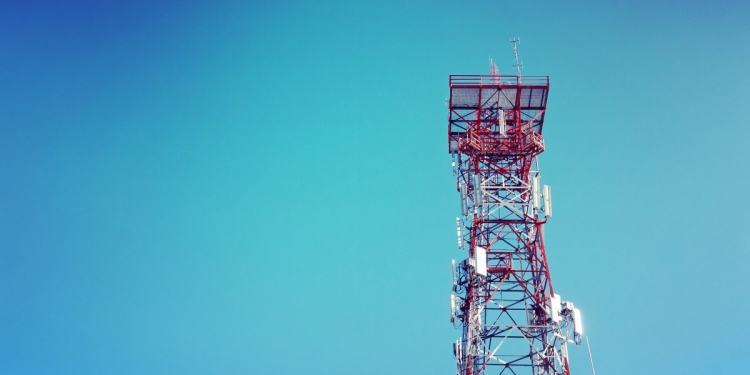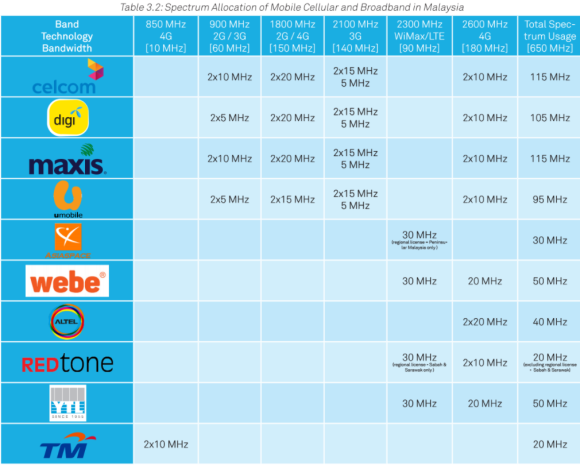Malaysians really love their mobile internet and our data consumption is set to increase exponentially in the coming years. According to Maxis’ Q2 2017 report, average data usage on their network has almost doubled from 3.7GB/month to 7.0GB/month year-on-year. In addition, Ericsson predicts that mobile data traffic will increase by 11X for South East Asia and Oceania by 2022.
While our telcos are continuously upgrading their network, there’s one major problem that would hinder our demand for more data and it’s up in the air. Based on UTM’s report on our mobile broadband development, Malaysia needs more spectrum in order to fulfil the growing need for mobile data. If Malaysia doesn’t take appropriate action, the quality of our mobile internet would deteriorate.
[nextpage title=”What’s spectrum and why do we need more?”]
For those who are not familiar, spectrum is basically space in the air that’s used for communication. Everything we use wirelessly including TV, radio, mobile and even WiFi is using a chunk of spectrum. Just because we can’t see it, doesn’t mean it is free or unlimited. In fact, it is a finite resource and telcos have to pay a lot of money to secure a chunk of it. The regulatory body that manages our spectrum allocation in Malaysia is MCMC.
Today, Malaysian telcos are allocated with a total of 650MHz of spectrum for our current 2G/3G/4G bands. According to UTM’s whitepaper, this isn’t enough and Malaysia will need additional 307MHz of spectrum to fulfil the forecasted mobile broadband traffic by 2020. In a nut shell, it’s like not having enough lanes on the highway to support the millions of cars on the road.
Malaysia isn’t alone in this spectrum shortage. Thailand has a gap of 410MHz while Singapore needs 450MHz more by 2020. In Indonesia, the gap is even wider at 625MHz.
How much spectrum is our telcos using right now?
Prof. Dr. Tharek Abd Rahman, the whitepaper’s lead researcher, shared that a Telco needs at least 100MHz of spectrum in order to have a reliable 4G LTE-Advanced experience with 100Mbps speeds. When we refer to the spectrum allocation table above, none of our telcos has 100MHz dedicated for 4G LTE. It is worth pointing out that Maxis is sharing extra 2x10MHz allocation from Redtone while Celcom is also sharing a similar 2x10MHz from ALTEL.
130MHz Spectrum Identified
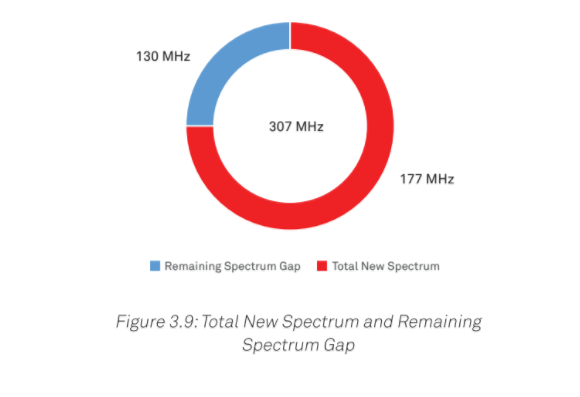
As an immediate solution, UTM’s whitepaper has identified 130MHz of possible spectrum that could be freed up very soon. One of it is 700MHz which is currently used for analogue TV transmissions. Compared to digital TV, analogue TV transmission is very inefficient. We are told that the amount of spectrum used for a single analogue TV channel is the same as 10 channels in digital format.
Once analogue TV transmission ends on June 2018, 90MHz from the 700MHz band can be repurposed for 4G LTE. Compared to other existing LTE bands in Malaysia, 700MHz is great for wider coverage as it offers twice the coverage radius than 1800MHz which is equivalent to 12 times in coverage area. In addition, lower frequency signals also allow better building and wall penetration compared to higher LTE bands.
Another identified spectrum is the 1400MHz (L-Band) which would provide more capacity than 700MHz. It is currently being used in Japan for mobile communications while others are using it for fixed links and radar, special media events and aeronautical telemetry services. In Malaysia, it is currently allocated for DMS and this extra 40MHz can be released by 2020.
After acquiring a 90MHz block on 700MHz and 40MHz on 1400MHz, there’s still a gap of 177MHz spectrum remaining.
[nextpage title=”Accelerating mobile service deployment in Malaysia”]
To cater for the future growth of mobile services, UTM has suggested several steps to move forward. The obvious one is to speed up the allocation of spectrum for mobile broadband services. Refarming existing spectrum for 4G LTE is a viable step and there are networks around the world shutting down their 2G and 3G networks to free up more spectrum for faster 4G. So far there are no plans to shut down 2G in Malaysia but Digi and U Mobile have already started deploying 4G on their 900MHz spectrum.
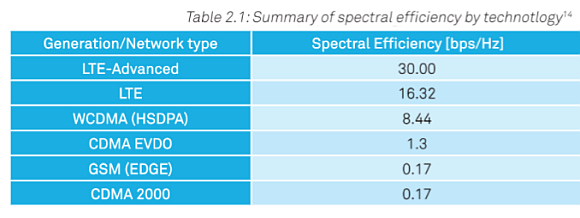
The whitepaper also suggested that the government provides incentives to close the coverage gap especially in suburban towns and rural areas. The challenge is partly due to the high cost of setting up new base stations just to serve a small population. As part of the national plan to make digital services available to all, the government could offer tax relief, grants or lower licensing fees as an incentive for telcos to roll out faster networks in underserved areas.
In the 11th Malaysian Plan (RMK-11), Malaysia aims to achieve 95% broadband coverage in populated areas by 2020 with 100Mbps accessible to all households in state capitals and high-impact growth areas. 20Mbps is targeted for at least 50% households in suburban and rural areas by 2020.
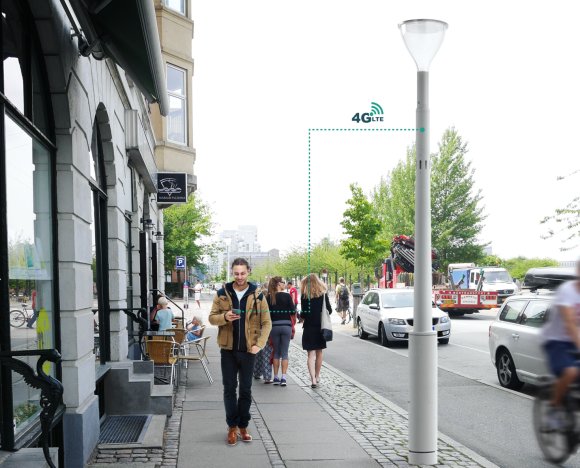
Deploying more base stations in populated areas has always been a challenge for telcos and this could be overcome with policies and cooperation from the government. One suggestion is to grant telcos access to government-owned land and facilities for setting up new base stations. The use of public infrastructures such as utility poles, street lamp poles and billboards for base station infrastructure can help to increase coverage and capacity in dense urban areas.
On top of that, providing indoor coverage with outdoor base stations isn’t effective as the signal gets degraded when passing through walls. To overcome this issue, more small cells are required indoors especially for high-density buildings. If there’s a consortium involving the government, building owners, councils and other stakeholders, policies and processes can be set in place to accelerate the deployment of base stations within buildings.
4G is still important to complement 5G
With 5G expected to be commercially deployed in 2020, 4G still plays an important role in the years to come. In the first phase, 5G is expected to operate at a higher band of 24GHz and it could go up to 80GHz. While it promises faster 1Gbps connectivity with an ultra-low latency of just 1ms, we would still need 4G for a wider coverage. Since 5G runs at a higher frequency, the coverage from each base station is significantly smaller and it would take some time to deploy 5G sites at key areas nationwide.
In short, don’t expect 5G to replace 4G but it acts as an overlay to provide higher capacity. For further reading, you can download UTM’s whitepaper over here.

